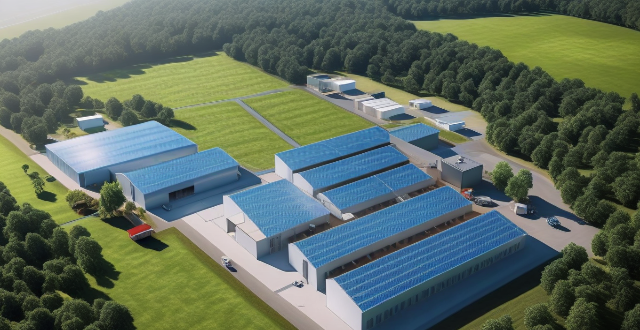Distributed energy systems (DES) are small-scale power generation units located close to end-users, offering benefits like increased energy efficiency and reduced environmental impact. Examples include solar PV systems, wind turbines, fuel cells, and microgrids. These systems can operate independently or connect to the main power grid. Solar PV systems convert sunlight into electricity using silicon cells, while wind turbines harness wind's kinetic energy. Fuel cells generate electricity through a chemical reaction of hydrogen and oxygen. Microgrids are localized groups of interconnected loads and distributed energy resources that can operate independently from the main power grid. DES contribute to a more sustainable future by improving energy efficiency, reducing environmental impact, and enhancing electricity supply reliability.

Introduction
Distributed energy systems (DES) are small-scale power generation units that are located close to the end-users, such as homes, businesses, or industrial facilities. These systems can be connected to the main power grid or operate independently. DES offer several benefits, including increased energy efficiency, reduced environmental impact, and improved reliability of electricity supply. In this article, we will discuss some examples of distributed energy systems.
Examples of Distributed Energy Systems
Solar Photovoltaic (PV) Systems
Solar photovoltaic systems convert sunlight into electricity using solar panels made of silicon cells. These systems can be installed on rooftops, carports, or ground-mounted arrays. The generated electricity can be used directly by the building or fed back into the grid for credit or sale.
Advantages:
- Renewable and clean source of energy
- Low maintenance costs
- Can be installed in remote areas without access to the grid
- Can reduce utility bills and provide income through net metering programs
Wind Turbines
Wind turbines generate electricity by harnessing the kinetic energy of wind. They consist of a rotor with blades that spin around a shaft, which is connected to an electric generator. Wind turbines can be installed on land or offshore and can range in size from small residential units to large commercial farms.
Advantages:
- Renewable and clean source of energy
- Low operating costs once installed
- Can be installed in areas with high wind speeds
- Can provide additional income through renewable energy credits or tax incentives
Fuel Cells
Fuel cells generate electricity by combining hydrogen and oxygen in a chemical reaction. They produce only water and heat as byproducts, making them a clean and efficient source of energy. Fuel cells can be used for both stationary and portable applications, such as backup power for data centers or transportation fuel for vehicles.
Advantages:
- High energy efficiency compared to traditional combustion engines
- Low emissions and pollution levels
- Can be used in conjunction with renewable energy sources like solar or wind power
- Can provide reliable backup power during outages or emergencies
Microgrids
A microgrid is a localized group of interconnected loads and distributed energy resources that can operate independently from the main power grid. It may include a combination of solar PV systems, wind turbines, fuel cells, batteries, and other energy storage devices. Microgrids can provide greater resilience and flexibility in managing energy demand and supply, especially during natural disasters or power outages.
Advantages:
- Increased reliability and security of electricity supply
- Ability to island from the main grid during emergencies or blackouts
- Potential cost savings through optimized energy management and reduced transmission losses
- Support for integration of multiple renewable energy sources and storage technologies
Conclusion
Distributed energy systems play a crucial role in modernizing our energy infrastructure and transitioning towards a more sustainable future. By incorporating various types of DES, such as solar PV systems, wind turbines, fuel cells, and microgrids, we can achieve greater energy efficiency, reduced environmental impact, and improved reliability of electricity supply. As technology continues to advance and costs decrease, we can expect widespread adoption of these systems across various sectors and applications.